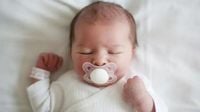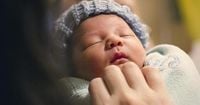The number of babies born in Scotland has plummeted to its lowest level since records began nearly 170 years ago, sparking concern among demographers, policymakers, and local communities. According to the National Records of Scotland (NRS), only 45,763 live births were registered across the country in 2024—a drop of 172 from the previous year and the lowest annual total since 1855. This marks the second consecutive year that Scotland has seen a record low in births, continuing a trend that has been ongoing since about 1965 (as reported by BBC and The Times).
The decline is not just a matter of numbers; it reflects a broader shift in Scotland’s demographic makeup. The country’s total fertility rate—the average number of children a woman is expected to have over her lifetime—fell from 1.27 in 2023 to just 1.25 in 2024, the lowest level since 1951. For context, a replacement fertility rate of about 2.1 is needed for a population to sustain itself without migration, but Scotland’s figure now sits far below that threshold (Zamin, BBC).
This downward trajectory is not limited to the national level. Inverclyde, a region in west Scotland, recorded only 594 live births in 2024, dipping below 600 for the first time in its history. That’s a sharp decline from 1,185 births in 1991—a drop of nearly 50% over just three decades. The area’s birth rate has been gradually falling since the early 1990s, mirroring the national trend (Greenock Telegraph).
At the same time, Scotland’s mortality statistics tell a somber story. There were 62,291 deaths registered in 2024, which is 16,528 more than the number of births. This means that, for over a decade, Scotland has experienced more deaths than births—a reversal from the last positive balance recorded in 2014. According to NRS, the gap between deaths and births has generally widened over the years, although there was a slight narrowing in 2024 due to a stable birth rate and a modest drop in deaths. The number of deaths in 2024 was actually 2% lower than in 2023 and 8.7% lower than expected (The Times, BBC, NRS).
Despite these grim statistics, there are some silver linings. The rate of stillbirths and infant deaths both hit historic lows in 2024. There were 159 stillborn babies, giving a stillbirth rate of 3.5 per 1,000 live births—down from 3.7 in 2023 and tying the lowest rate ever recorded in Scotland. Infant deaths also totaled 159, with a rate of 3.5 per 1,000 live births, down from four per 1,000 the previous year. These improvements highlight advances in prenatal and neonatal care, even as overall birth numbers decline (BBC, The Times).
Phillipa Haxton, head of vital events statistics for NRS, summed up the situation as the data was released: “The annual figures for 2024 show a year of record lows. Births, fertility, stillbirth and age-standardised mortality rates are all at their lowest levels since our records began. These figures reflect long-term changes in our population. Scotland has had more deaths than births for over a decade.” (BBC, The Times, Greenock Telegraph)
What’s behind this demographic shift? Experts point to a constellation of factors. Rising living costs, housing challenges, and the increasing difficulty of balancing family life and work have all contributed to couples choosing to have fewer children—or delaying parenthood altogether. The NRS highlighted a notable change in maternal age: whereas most women in the 1960s had children in their 20s, today, more than 35% of all births are to women aged 30–34. This trend is not unique to Scotland; the United Nations has identified similar patterns in many developed countries, with global birth rates declining due to economic pressures and shifting social norms (Zamin).
Population growth in Scotland now relies almost entirely on migration. With the birth rate so far below replacement level, the country’s population would be shrinking were it not for people moving in from elsewhere. This has significant implications for the country’s future workforce, economic growth, and the sustainability of public services—especially as the population ages and the ratio of working-age people to retirees declines (Zamin, BBC).
Interestingly, while births are falling, other indicators of social change are moving in the opposite direction. The number of marriages in Scotland rose in 2024, with 26,955 couples tying the knot—an increase of 202 from the previous year. Civil partnerships also reached their highest level since 2006, with 796 registered in 2024. Notably, 83% of these civil partnerships were between mixed-sex partners, reflecting evolving attitudes toward relationships and family structure (BBC, The Times).
In Inverclyde, the local picture is a microcosm of the national situation. The area saw 1,126 deaths in 2024, slightly fewer than the 1,173 recorded in 2023. Yet, the gap between deaths and births continues to widen, with more than 500 additional deaths than births last year. The steady decline in births since 1991 and the persistent excess of deaths over births underscore the challenges facing many Scottish communities (Greenock Telegraph).
Scotland’s experience is part of a broader demographic transformation sweeping much of Europe and other parts of the developed world. As birth rates fall and populations age, countries are grappling with how to maintain economic vitality, fund pensions and healthcare, and support families. Some governments have introduced policies to encourage childbearing—through parental leave, childcare subsidies, and housing support—but reversing long-term trends has proven difficult.
The NRS data also reveals shifting family dynamics. The increase in civil partnerships, especially among mixed-sex couples, suggests a diversification in how people choose to formalize their relationships. Meanwhile, the rise in maternal age reflects changing priorities, as more women pursue higher education and careers before starting families.
Looking ahead, the implications of Scotland’s record-low birth rate are profound. Without a turnaround in fertility or a sustained influx of migrants, the country faces the prospect of a shrinking workforce and increased pressure on social services. Policymakers, demographers, and community leaders are now tasked with finding ways to address these challenges—whether through family-friendly policies, support for working parents, or strategies to attract and retain new residents.
For now, the numbers speak for themselves: Scotland’s population is at a crossroads, shaped by decades of change and facing an uncertain demographic future.


